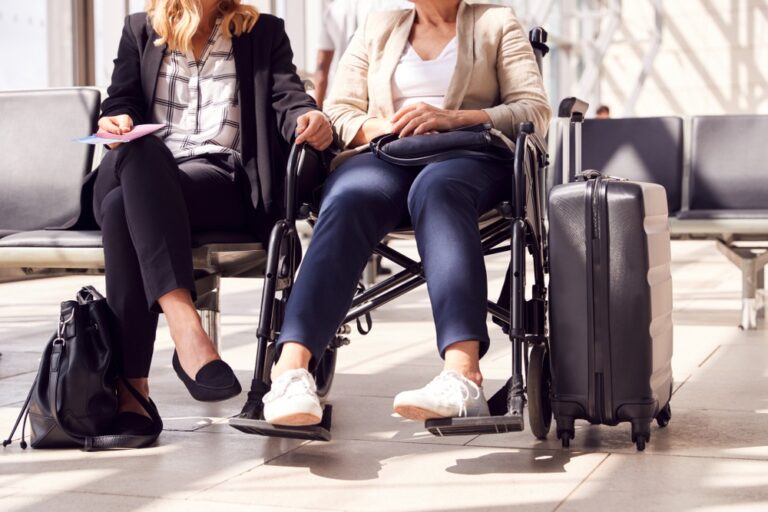Traveling with a family member or friend with limited mobility can be an enriching and fulfilling experience. However, it requires thoughtful preparation and the right tools to ensure comfort, safety, and accessibility throughout the journey. By incorporating specialized equipment and planning ahead, you can create an inclusive travel experience that accommodates everyone’s needs. Here are some ideas and devices that can make the process easier and more enjoyable.
Essential Mobility Devices
Mobility devices are a cornerstone of accessible travel. One of the most convenient options are portable folding mobility scooters. These scooters are designed to be compact and lightweight, making them ideal for transportation and storage. Many models are even approved for airline use, allowing for seamless travel during flights. With features such as long battery life and the ability to handle uneven surfaces, these scooters provide freedom and independence to those with mobility challenges.
For individuals who prefer a more compact option, travel wheelchairs are an excellent choice. Lightweight and foldable, they are easy to pack into car trunks or overhead compartments. Whether manual or electric, travel wheelchairs are specifically designed for the rigors of transportation and are invaluable when navigating airports or exploring new destinations.
Rollators with seats offer a hybrid solution, combining the stability of a walker with the comfort of a built-in seat. This is particularly useful for long walks or waiting in lines, providing a convenient place to rest without needing a separate chair. For travelers facing the challenge of stairs, stair-climbing aids or attachments for wheelchairs offer a solution. These innovative devices, which may include motorized components, ensure that stairs do not become a barrier to exploration.
Transportation Solutions
Transportation plays a critical role in accessible travel. Wheelchair-accessible vehicles, such as rental cars with ramps or lifts, provide the flexibility and convenience of private transportation. Many airports and car rental companies offer adapted vans or shuttles, ensuring smooth transfers from one destination to the next.
For travelers who anticipate encountering curbs or steps, portable ramps are a practical and lightweight tool. Available in foldable or telescoping designs, these ramps make it easy to navigate uneven terrain and enhance accessibility in a variety of settings.
Enhancing Comfort and Support

Long journeys can take a toll on anyone, but they can be especially challenging for those with limited mobility. Comfort aids such as cushions and back supports are invaluable in these situations. Gel or memory foam cushions designed for wheelchairs or scooters provide extra comfort during extended periods of sitting, while lumbar supports help maintain proper posture.
Leg lifters are another simple yet effective device, enabling individuals to adjust their leg positions for greater comfort. Additionally, transfer aids, such as sliding boards or transfer belts, facilitate safe and efficient movement between chairs, beds, and vehicles, reducing strain on both the traveler and their companion.
Convenient Travel Accessories
When it comes to day-to-day convenience during travel, small accessories can make a big difference. Portable grab bars, which use suction to attach securely to walls, are especially helpful in hotel bathrooms or other unfamiliar spaces. These devices offer additional support and stability, reducing the risk of slips and falls.
Foldable shower chairs provide another layer of safety, ensuring a comfortable and accessible bathing experience. For travelers requiring supplemental oxygen, travel-friendly oxygen concentrators are compact, FAA-approved units that make it easy to maintain health needs while on the go. Storage bags and holders that attach to mobility devices help keep personal items organized and within reach, adding to the overall ease of travel.
Planning for Accessible Adventures
Careful planning is essential to creating a positive travel experience. Accessibility apps like Wheelmap or AccessNow are valuable tools for identifying wheelchair-friendly locations, such as restaurants, attractions, and accommodations. Additionally, platforms like TripAdvisor often include reviews that highlight accessibility features, offering firsthand insights from other travelers.
Pre-arranged assistance can alleviate many travel-related stressors. Requesting wheelchair assistance at airports or train stations ensures smoother navigation through large and busy spaces. Informing hotels or tour operators in advance about specific needs allows them to make necessary arrangements, from providing accessible rooms to scheduling adapted tours.
Accessible travel agencies can also be a great resource. These agencies specialize in crafting itineraries that cater to mobility requirements, handling the details so you can focus on enjoying the trip.
The Role of Technology in Accessible Travel
Technology can play a transformative role in enhancing mobility and independence. GPS-enabled mobility devices, such as scooters or wheelchairs, offer guidance in unfamiliar areas, helping travelers navigate confidently. Smartphone mounts that attach to mobility devices keep phones easily accessible for navigation, communication, and entertainment.
Wearable alert devices provide an added layer of security, allowing travelers to call for help in case of an emergency. These small but powerful tools can provide peace of mind to both the traveler and their companion, ensuring prompt assistance when needed.
Creating Memorable Travel Experiences
By combining thoughtful planning with the right tools and devices, you can ensure that traveling with a family member or friend with limited mobility is a rewarding and enjoyable experience. Flexibility and understanding are key to accommodating unique needs and creating an inclusive environment. Whether it’s exploring new cities, relaxing on a beach, or visiting family, the joy of shared experiences makes the extra effort worthwhile.
With preparation, creativity, and a focus on accessibility, the world becomes a more welcoming and navigable place for everyone.


